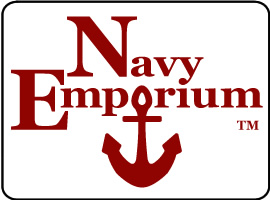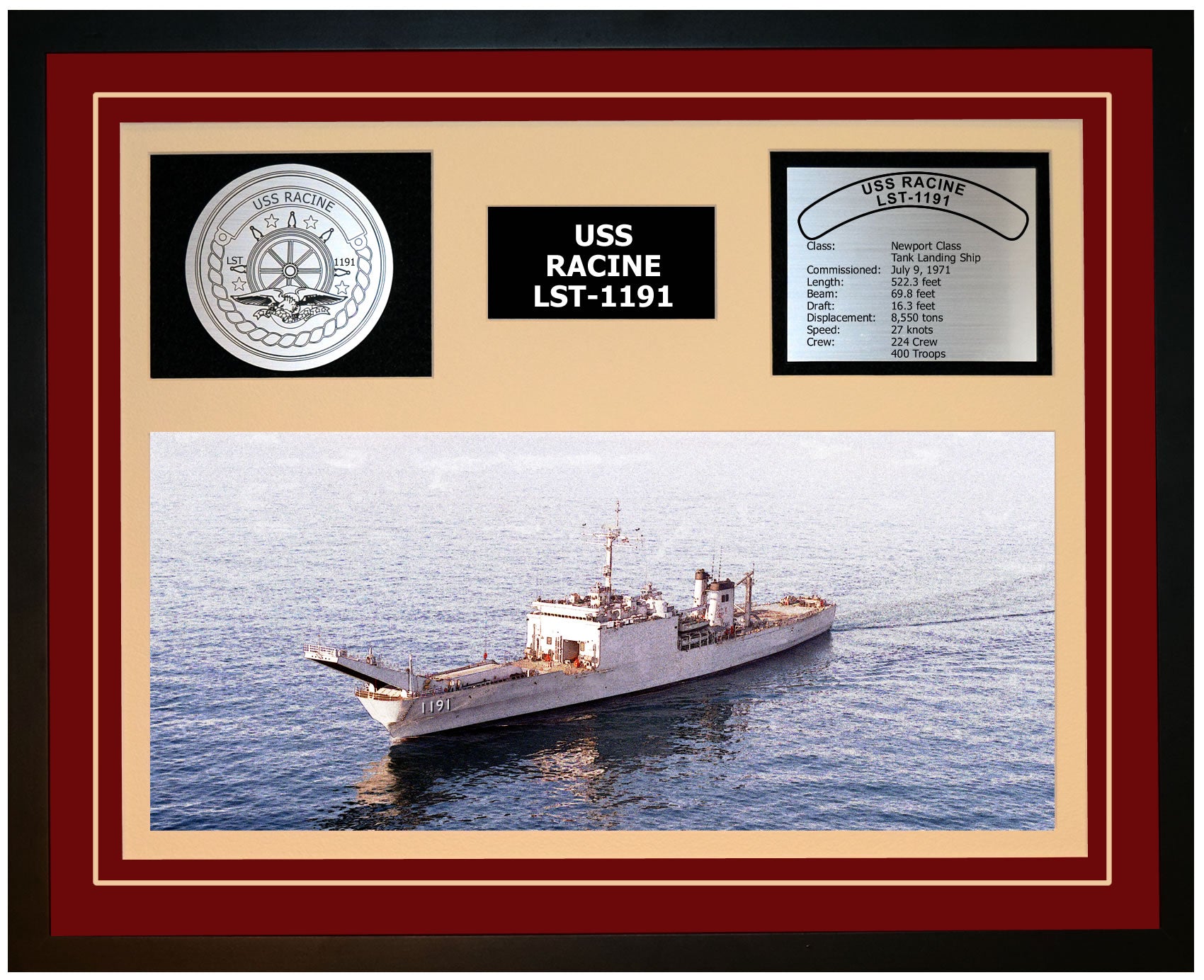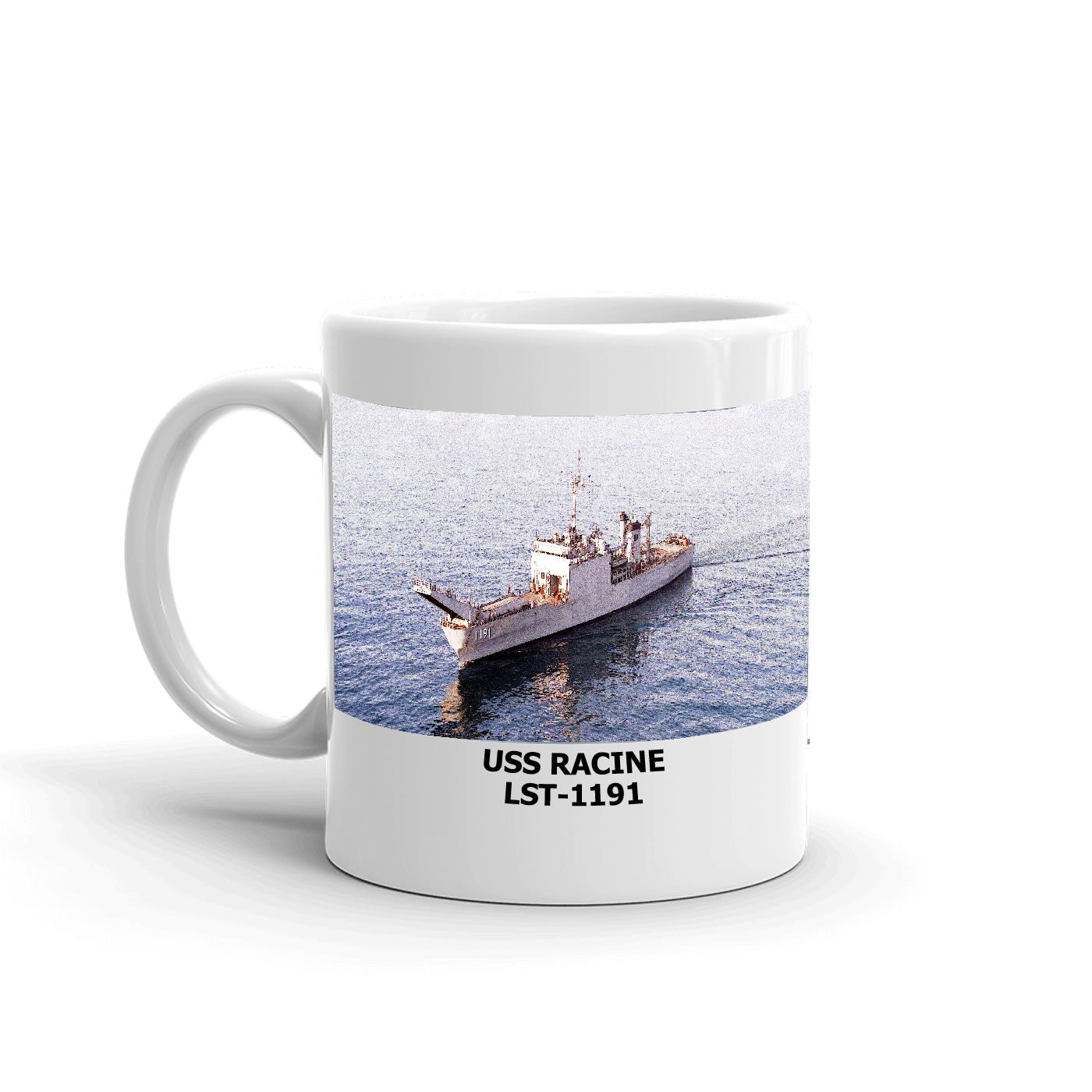Imagine being onboard the USS Racine LST-1191, feeling its stern cut through unyielding waves, carrying soldiers and cargo to places where history was etched. This ship embodies pure guts, clever thinking, and an unyielding will to keep pushing.
From her inception at the hands of National Steel to her ventures into war-stricken territories, she's a vessel with an enthralling narrative that would keep any ocean aficionado hooked.
We will examine the unique narrative of this exceptional landing ship tank, including the heritage of the city she stood for, her loaded arsenal, and historic voyages.
Construction and Design of USS Racine LST-1191
The USS Racine (LST-1191), a formidable Newport class tank landing ship, was brought to life by the skilled hands at National Steel and Shipbuilding Corp in San Diego, CA.
The Role of National Steel and Shipbuilding Corp in the Construction
Laid down on December 13, 1969, this maritime marvel stands as a testament to American ingenuity and craftsmanship. The workers from National Steel not only followed blueprints but breathed soul into cold steel.
The launch date was set for August 15, 1970 - just eight months after laying her keel. This swift project turnaround really highlights just how slick today's naval building methods are.
Bearing unique distinguishing features such as traditional bow door design along with stern gate for shuttling men & amphibious vehicles made it stand out among its peers. Built tough to tackle stormy seas, it was designed to keep its speed up for slick operations.
Not just the core architecture, but even things like how weight was balanced mattered a lot in making this ship more effective during battle times.
Finally commissioned on July 9th, 1971 under command of Cmdr H.E. Hooper USN Ret., she sailed off proudly bearing her namesake – City of Racine from Wisconsin.
Constructed with an eye on the horizon, the USS Racine was prepped to roll with emerging advancements in naval combat tech while steadfastly fulfilling her duty to her country.
National Steel builds ships with care and expertise. The commitment to quality shown by National Steel in every Navy vessel they build truly sets them apart.
USS Racine LST-1191's Namesake and Legacy
Carrying the name of Racine, Wisconsin with pride, the USS Racine LST-1191 remains a remarkable part of US Navy's chronicles. This ship truly stands as a shining symbol of the dynamic city that's contributed so much to our naval force.
Built as part of the Newport tank landing ship class, it was far from being just another number in the roster. As the thirteenth vessel of its kind, it embodied advances over previous models. But what made her stand out were not only these technological feats but also her contributions during active service.
In fact, throughout her years on duty she received numerous awards and commendations for her performance - something all associated with USS Racine took great pride in. For a deeper dive into these honors, check out the USS LST Ship Memorial - they've got all the nitty-gritty details.
Awards and Commendations:
- Navy Unit Commendation Ribbon (NUC): The NUC is one among many honors bestowed upon those who serve above and beyond their call of duty.
- Military Outstanding Volunteer Service Medal (MOVSM): Given to personnel who perform substantial volunteer services to local communities.
- National Defense Service Medal (NDSM): A decoration awarded for honorable active service during national emergencies or armed conflicts.
USS Racine's awards reflected its crews' dedication to serving with excellence.
Armament and Weaponry of USS Racine LST-1191
The formidable armaments system of the USS Racine LST-1191 stood as a testament to its raw power. The ship's surface-to-ship missiles weren't just for display; they were vital players in battle scenarios.
Fitted with two twin 3'/50 dual-purpose gun mounts, this landing ship was always ready for action. But the show was far from over. With a duo of 25mm chain guns thrown into the mix, the ship's capacity to manage and counteract multiple threats simultaneously received a significant boost.
To further fortify itself against airborne attacks, six .50 cal machine guns were mounted on board. Leveraging these hefty guns gave the team a solid upper hand in intense combat situations.
For close-in self-defense capabilities against incoming enemy projectiles or aircrafts, USS Racine was equipped with one 20mm Phalanx Close-In Weapons System (CIWS). This swift-firing cannon served as a final line of defense, making sure that nothing could creep too close without dealing with serious fallout.
A Look at Naval Strike Missile (NSM)
The USS. Racine was sunk on July 12, 2018 by a live fire exercise of the Naval Strike Missile (NSM). A highly sophisticated weapon designed by Kongsberg Defence & Aerospace specifically for naval platforms - it represented next-generation strike capability at sea level.
Technological Upgrades and Modifications
The USS Racine LST-1191 underwent several technological advancements to boost its mission capabilities. At the heart of these upgrades were six 16-cylinder ALCO 16-251E main propulsion diesel engines, powering two shafts with three engines per shaft. Reliability was paramount; the powerful engines enabled continuous functionality even in rough seas.
This beast of a propulsion system isn't just flexing its muscle with raw power; it's also rock-solid reliable, never skipping a beat even when the going gets rough. Even in the smoothest sail or roughest storm, this powerhouse made sure our ship could do its job, no matter what.
With every upgrade implemented on USS Racine LST-1191 came improvements that pushed boundaries and challenged norms for naval engineering. For instance, as part of her modifications program conducted by NavSource Online, traditional bow door design was revised significantly enhancing amphibious vehicles' loading process through improved access to tank deck area.
When we look at all these high-tech updates, it's crucial to ask how they're really impacting the ship's overall performance. As we analyze stats related to speed or load capacity before and after each modification phase carried out onboard USS Racine LST-1191, it becomes evident how impactful they've been in bolstering this great ship’s legacy within US Navy fleet.
Maintaining Performance Over Time
The regular maintenance procedures she underwent played a crucial role in keeping her performance at peak levels. Ensuring the ship's optimal condition, whether it be routine maintenance or emergency repairs, was made possible through Naval Inactive Ship Maintenance Facility.
Discussing the USS Racine LST-1191, it's not just about its power. What's really striking is how skillfully the shift and tech upgrades have been handled over time. Because of stellar management, the ship remains on top of its game.
It's key to its long-term survival. With an unyielding attention to detail, the ship's crew made certain every component was in tip-top condition through routine inspections and timely fixes. Regular upkeep didn't just crank up the Racine's performance, it also tacked on more years to its life in service. So, it's no surprise that when a gripping book gets turned into a film, fans scrutinize every detail—comparing the on-screen rendition with their vivid imaginations while reading.
USS Racine LST-1191's Deployment History and Role in Major Conflicts
The USS Racine, with a maximum speed of 27 knots, played a crucial role in several major conflicts. Her crew consisted of 14 Officers, 15 CPOs, and 226 Other Enlisted personnel.
The South American Cruise
One notable mission was the South American cruise operation. The USS Racine visited Valparaiso, where she weighed anchor before setting off on her duties shuttling men between American bases.
The USS Racine, true to its landing ship tank class, nailed its role even amidst tricky situations - truly a testament to her capabilities.
Pivotal Roles During Conflict Times
In addition to routine operations like the South American cruise, the USS Racine also found herself at the heart of many military skirmishes. She was always ready for action thanks to its capable complement of officers and enlisted personnel who were well trained for conflict scenarios.
A particularly tense moment came during war times when live firing exercises became common occurrences for this naval juggernaut.
Racine’s Last Voyage
In October 1991 following extensive service across multiple theaters of operation around the globe; including stops at Pearl Harbor on America's west coast; and Long Beach Naval Shipyard for maintenance works - it was decided that she would be decommissioned from active duty but not forgotten.
Historical Records and Documentation - USS Racine LST-1191's Cruise Books
The cruise books of the USS Racine LST-1191 offer a unique window into its past. Just like flipping through a yearbook, these collections offer up close and personal snapshots of life on the ship – detailing everything from everyday operations to the interplay between crew members during different missions.
Curious about what makes these records a big deal? Well, just imagine being able to time travel back to the golden era of this landing ship tank (LST). You'll find stories about shuttling men between American bases or perhaps some tales about their experiences when they weighed anchor at foreign ports.
Crew memories onboard the USS Racine LST-1191
The USS Racine LST-1191, through the eyes of its crew, emerges as a vessel of profound experiences, camaraderie, and personal growth. From emotional memorials to adventurous overseas cruises, each account offers a glimpse into the unique life aboard this Landing Ship Tank, highlighting the indelible impact it left on its crew.
Sandi Maloney pays tribute to her father, Petty Officer First Class Paul Maloney Sr., thanking the crew for their support at his memorial, underscoring the profound sense of family and heroism ingrained within the community of the USS Racine.
Alton Hill, Dan Swart, and others reminisce about the great times and memorable experiences, from the Coral Sea commemoration cruise to unforgettable visits to Australia, embodying the adventurous spirit that defined their time on the Racine.
Ted Trinosky, now a Locomotive Mechanic/Machinist with Amtrak, reflects on his quest to reconnect with former shipmates, demonstrating the lasting bonds and the sense of calling that many found through their service.
John Adams Adams and Bob Goodrich share their initial forays into naval life aboard the Racine, highlighting the mentorship and unforgettable experiences that shaped their early careers, from South American voyages to lively port visits.
Juan Lopez, Bob Bowers, and David Droste discuss the unforgettable chapters of their lives spent on the Racine, from island-hopping campaigns commemorating WWII to integrating with diverse crews, showcasing the blend of duty and camaraderie that characterized their service.
Scott Lowe's account of Seabees detached to perform construction for island residents illustrates the unique integration of different naval units, fostering a sense of unity and purpose amongst the crew.
Stephen Hughes and Gary Mihalko, who continued their naval careers well beyond their time on the Racine, highlight the foundational experiences and friendships that propelled them forward, underscoring the vessel's role in their lifelong commitment to service.
Stan Boylan, Jeff Barnett, and Tim Dolack evoke the spirit of camaraderie and the unforgettable adventures shared among the crew, from long beach parties to the intense work and leisure dynamics that defined their time aboard.
Michael Tacovelli, Jim Boerner, and Tony McInvale reflect on their journeys from young sailors to seasoned veterans, acknowledging the profound personal and professional impact of their service on the Racine.
Arvin Budomo, Charles Miller, and Mike Lenentine share insights into the challenges and joys of life at sea, from the rigors of daily duties to the deep connections formed with fellow crew members, painting a picture of a tightly-knit community forged through shared experiences.
Together, these memories form a rich tapestry of life aboard the USS Racine LST-1191, a testament to the ship's role not just as a vessel of war, but as a crucible for lifelong friendships, personal growth, and unforgettable adventures that shaped the lives of its crew.
Decommissioning of USS Racine LST-1191 and Its Legacy
The USS Racine (LST-1191), an embodiment of American naval prowess, was decommissioned on October 2, 1993. But even in retirement, this magnificent ship wasn't about to fade into obscurity.
Racine joined the Inactive Reserve at the Naval Inactive Ship Maintenance Facility located in Pearl Harbor. It spent its twilight years here - a symbol of bygone battles and valorous voyages.
In 2018, it found itself back under the spotlight during RIMPAC 2018 - but not as you might expect. Instead of joining active service once more, our veteran vessel had a different role to play.
Sinking Exercise (Sinkex) at RIMPAC
On July 12th that year, it played target practice for multiple navies participating in RIMPAC. The sinking exercise or 'sinkex' is designed to test modern weapon systems against actual targets instead of simulations.
Racine's last assignment, crucial as it was, unfolded like this: It lets teams like the Ground Self-Defense Force in Japan and Australia's Royal Air Force put their offensive skills to the test, using missiles aimed at ships, particularly the Naval Strike Missile.
A Warrior’s Farewell
The sinkex culminated with live firing from several ships simultaneously until finally Racine went down beneath Pacific waves. Even though she lies now at the bottom of the sea floor somewhere near Hawaii – her legacy lives on.
Honoring Our Veterans through Art & Commemorations
Remembering the USS Racine and its crew is essential for honoring their service. To honor their service, we display navy artifacts.
Check out our collections, a homage to not just one ship or crew but all who've bravely served in our nation's navy. This trip will surely spark your curiosity and stoke the fires of inspiration.
FAQs in Relation to Uss Racine Lst-191
What happened to the USS Racine?
The USS Racine was decommissioned in 1993. Later, it met its end during RIMPAC 2018 on July 12 when it was sunk as part of a sinking exercise.
What replaced the LST?
Landing Ship Tanks (LSTs) like the USS Racine were phased out and replaced by newer classes of amphibious warfare ships, including Landing Platform Dock (LPD) vessels.
USS Racine LST-1191 Ship Specifications
| Specification | Details |
|---|---|
| Class | Newport Class Tank Landing Ship |
| Commissioned | July 9, 1971 |
| Displacement | 8,550 tons |
| Length | 522.3 feet |
| Beam | 69.8 feet |
| Draft | 16.3 feet |
| Speed | 27 knots |
| Complement | 224 Crew 400 Troops |






